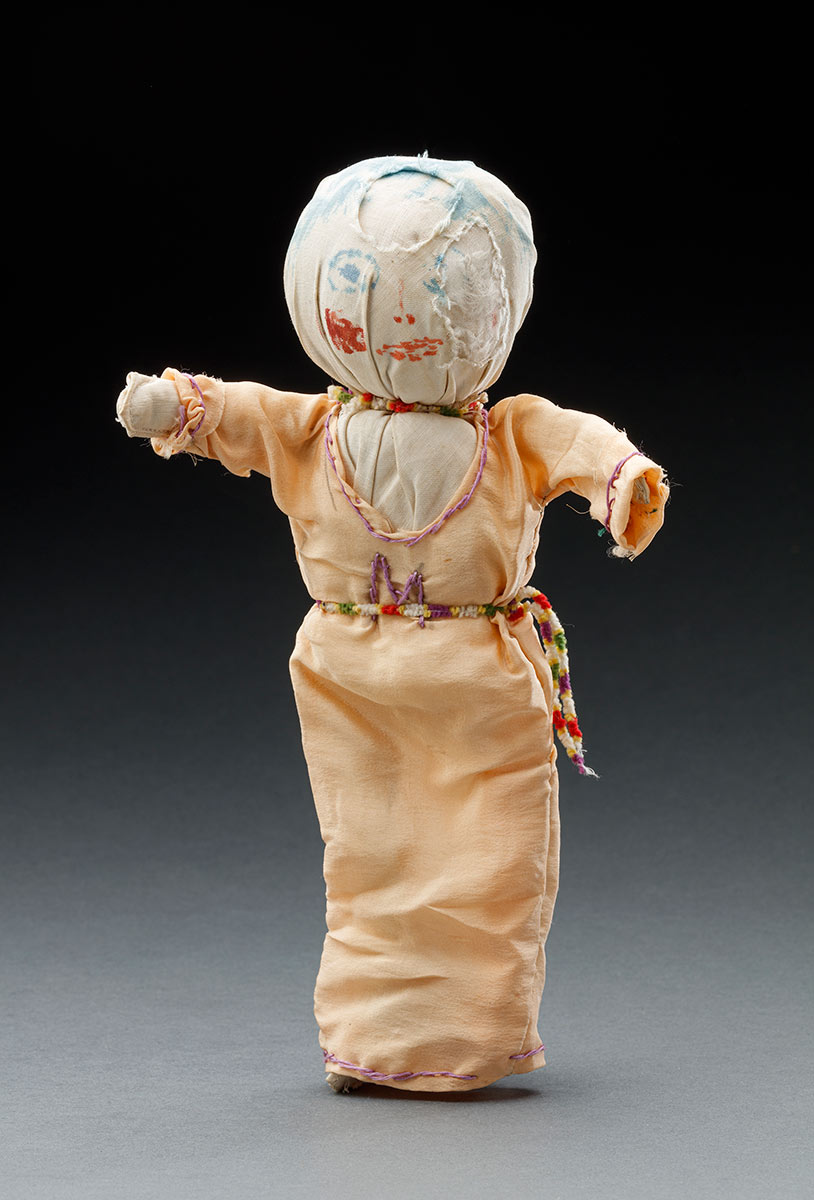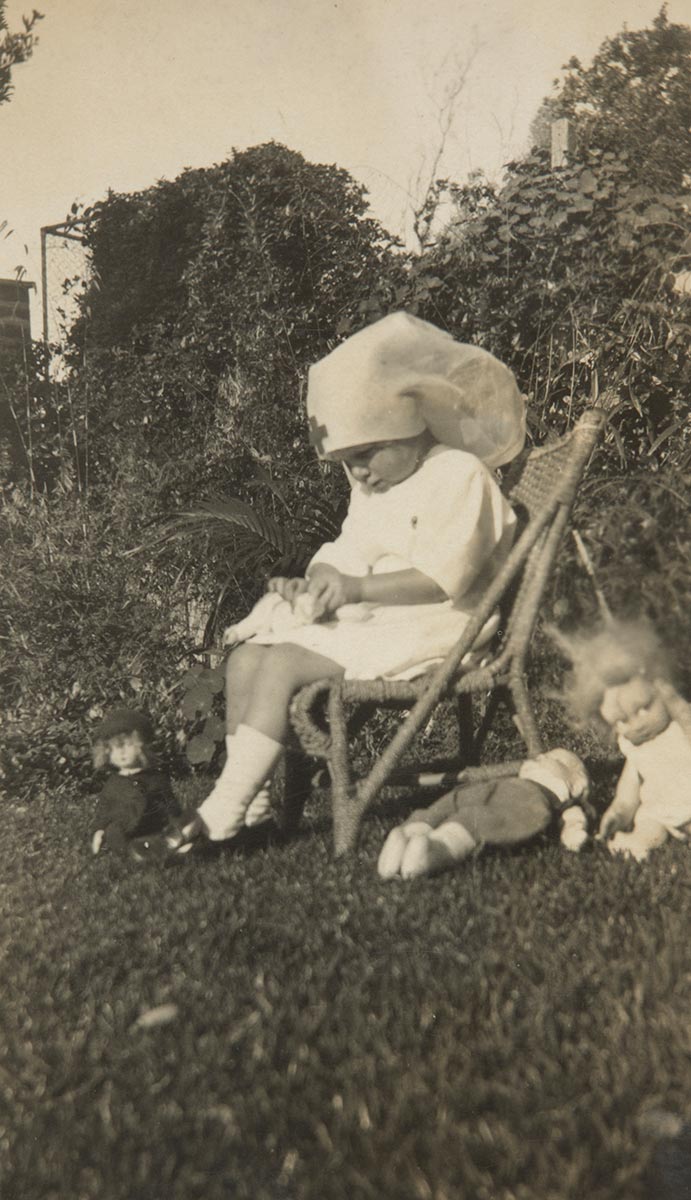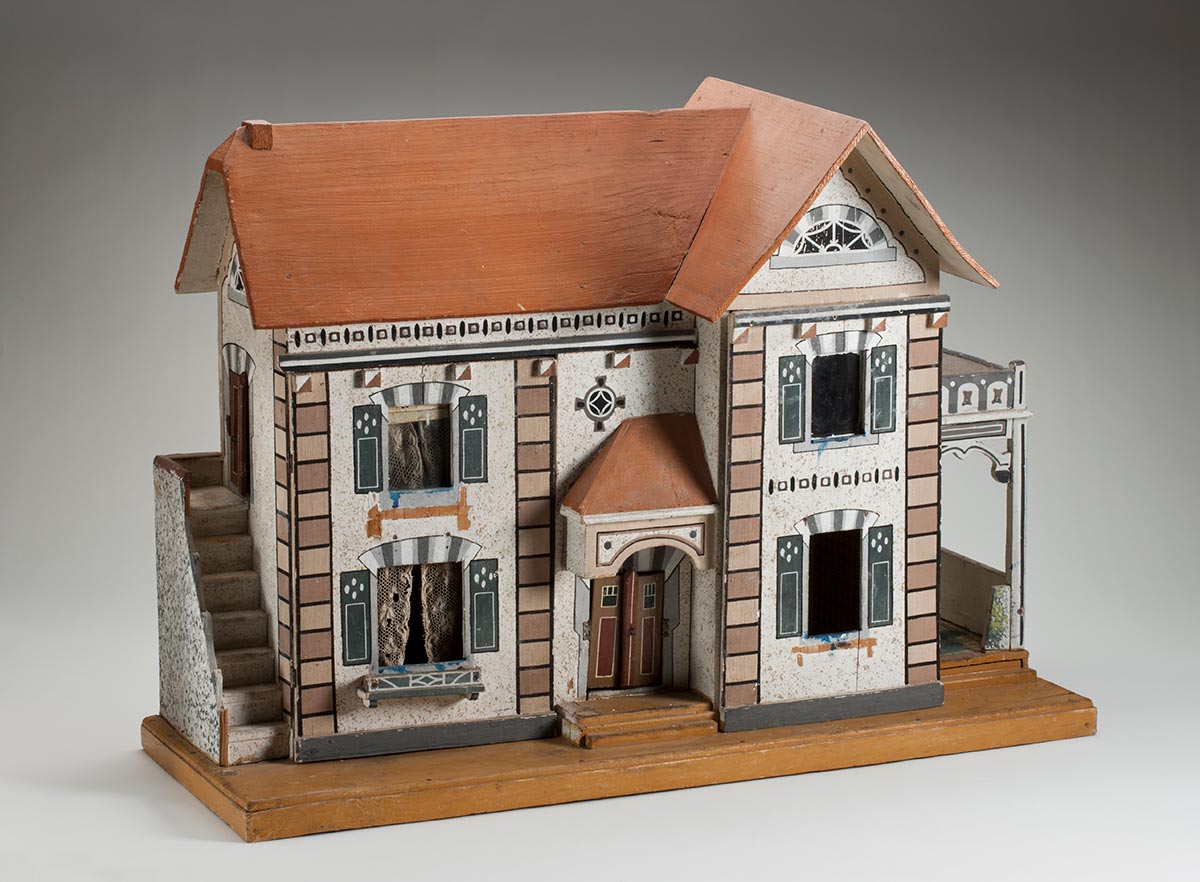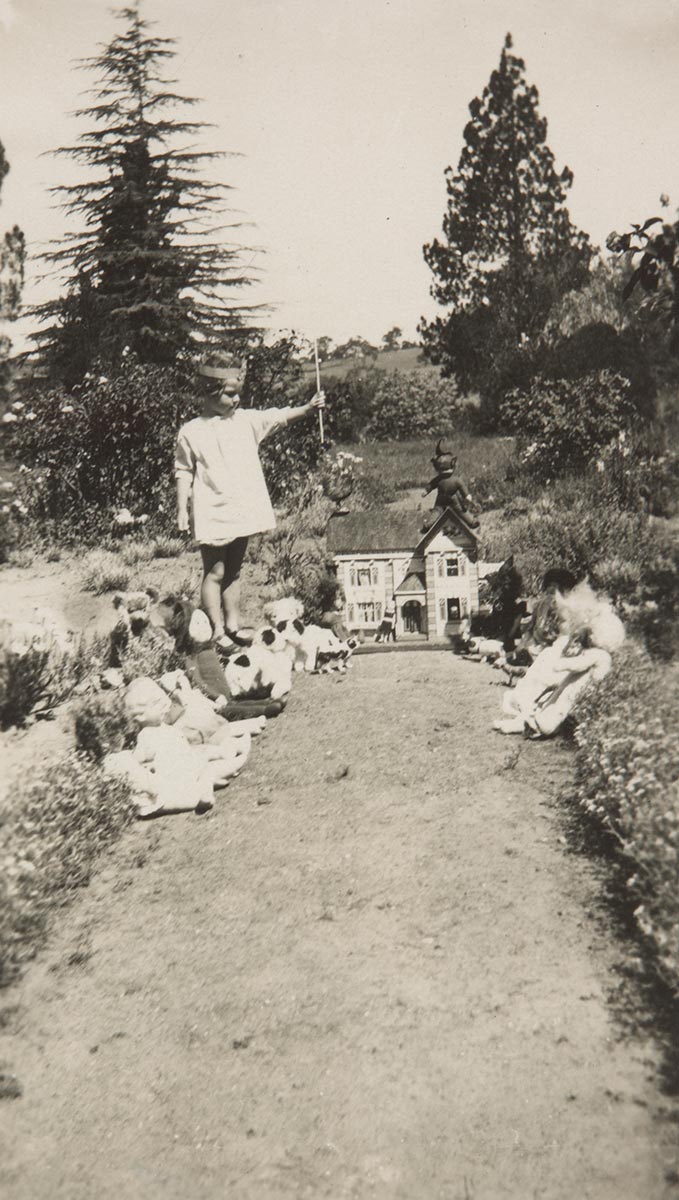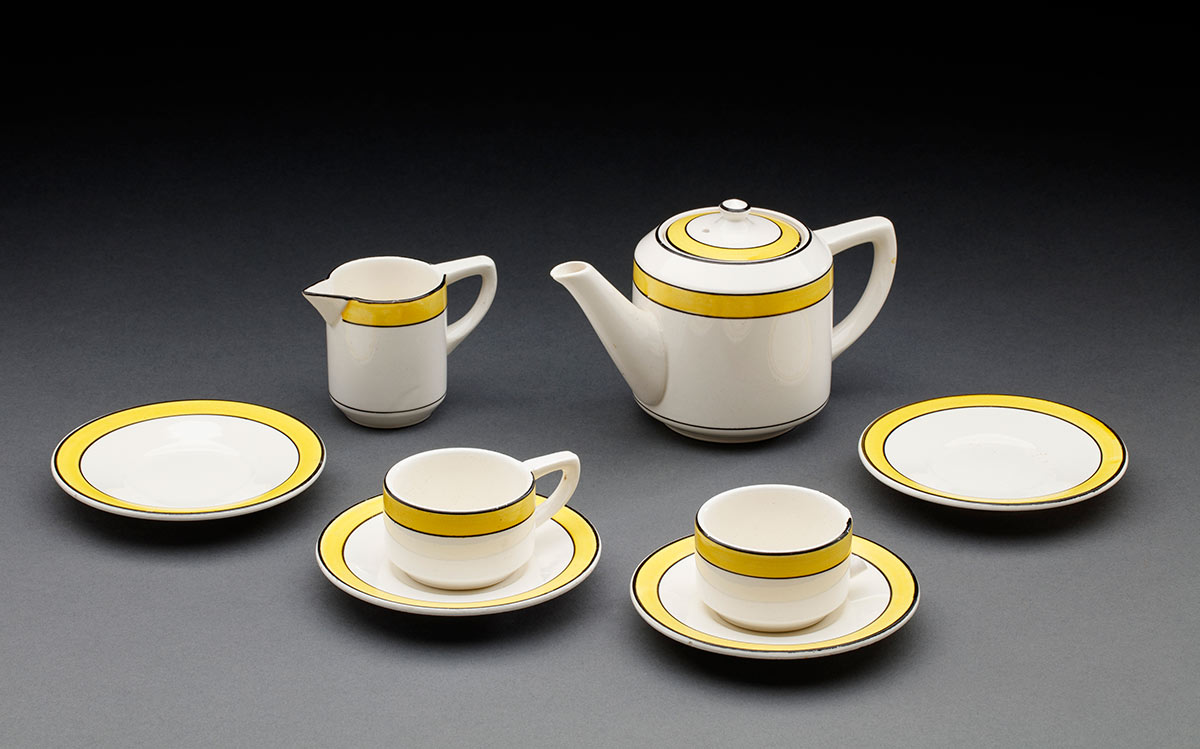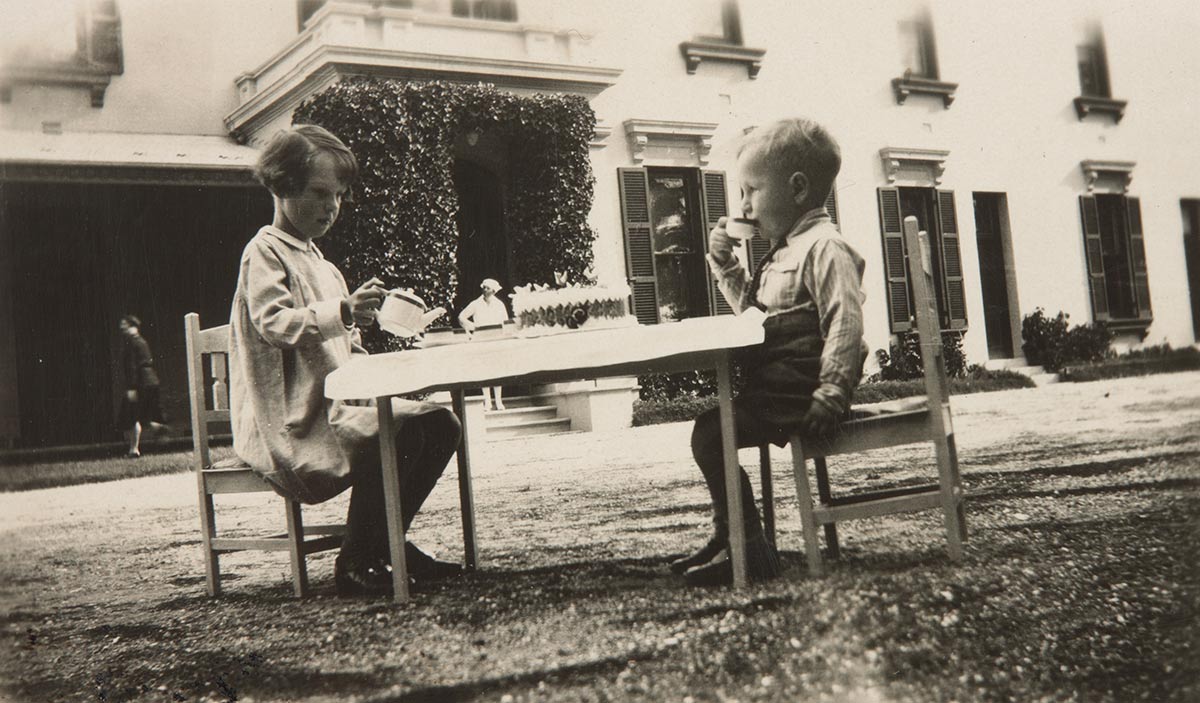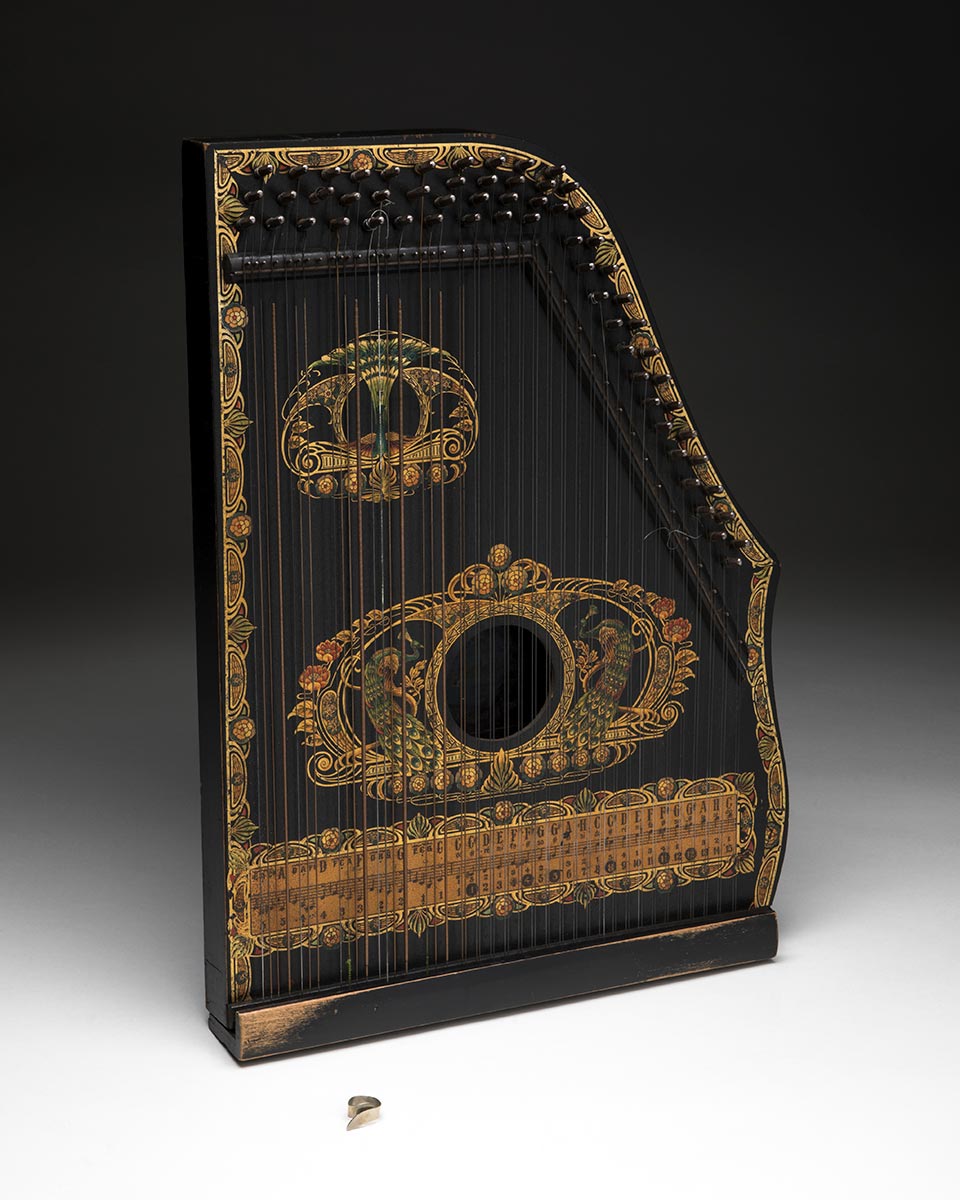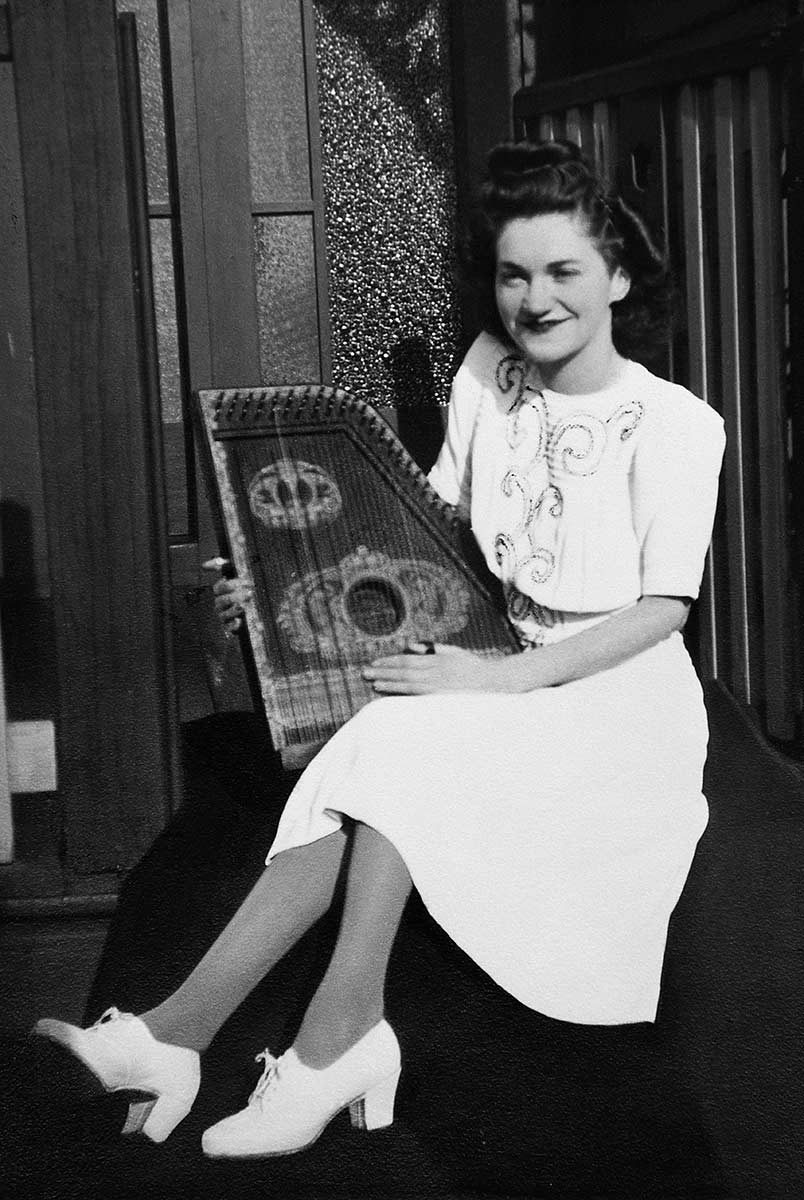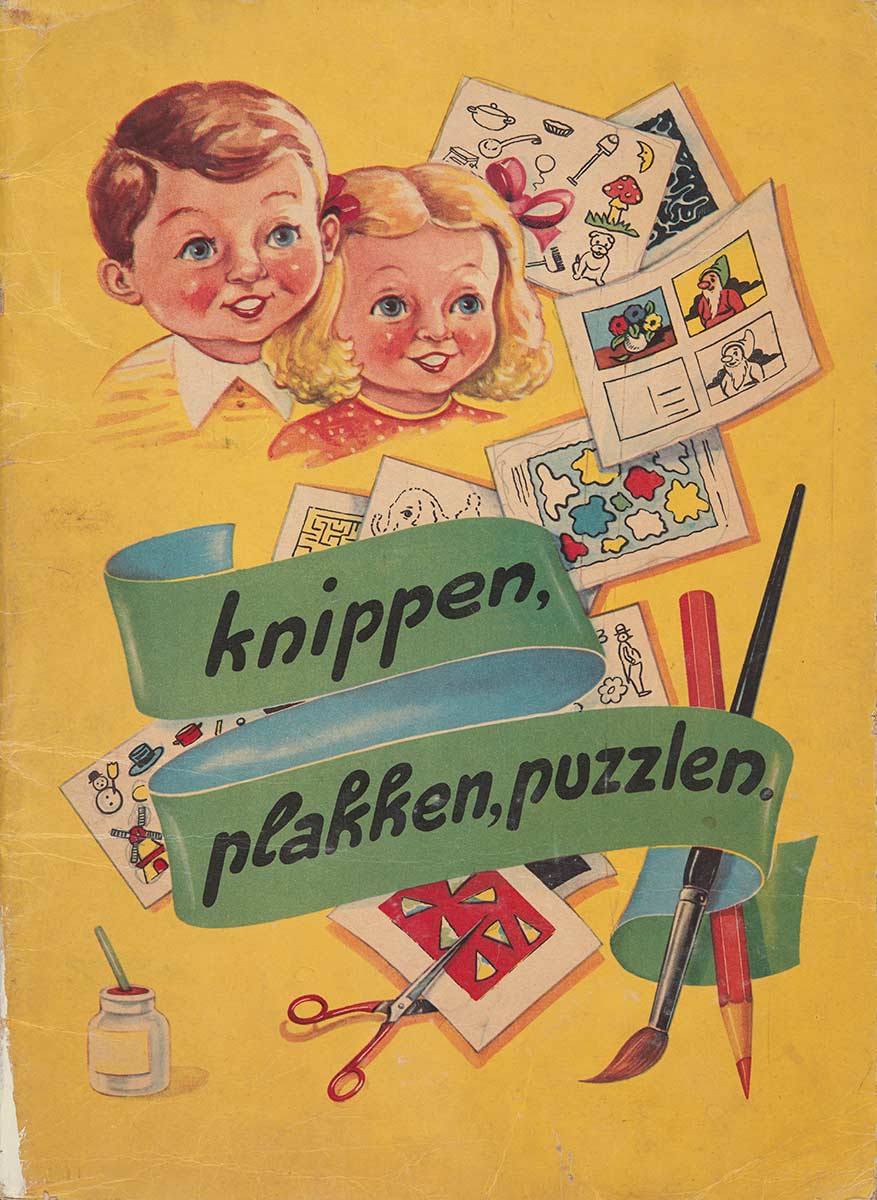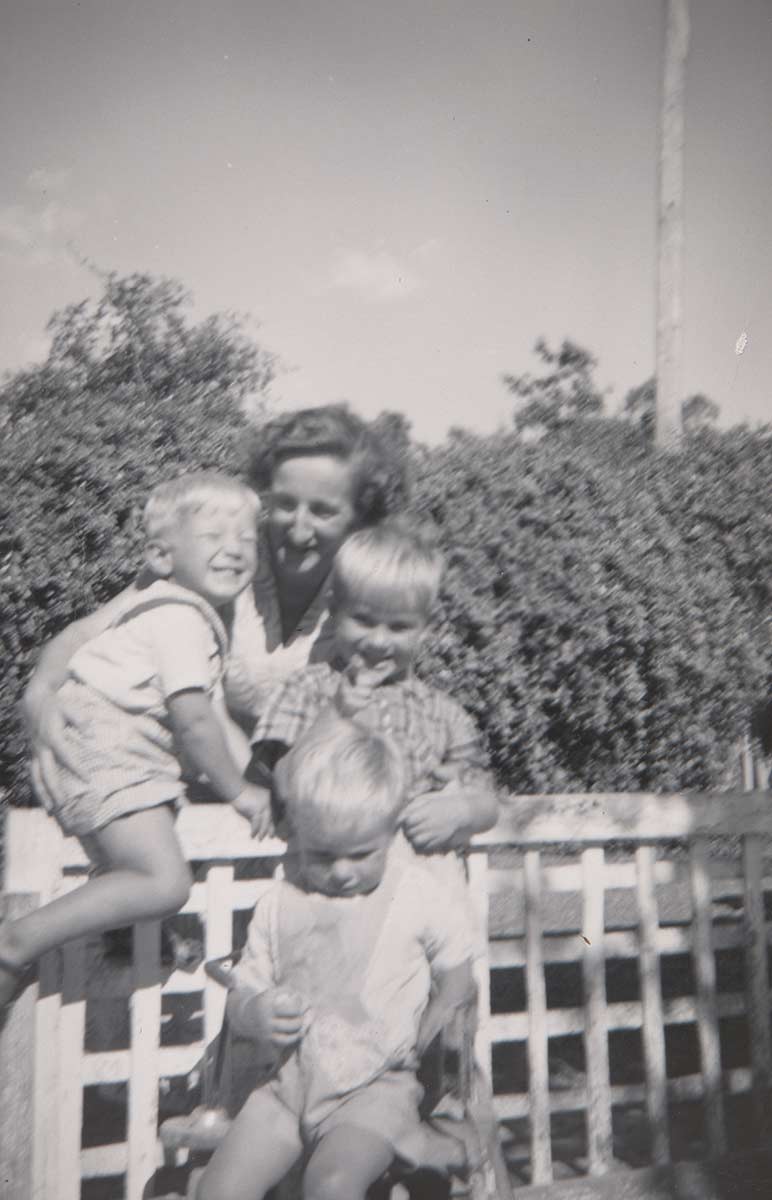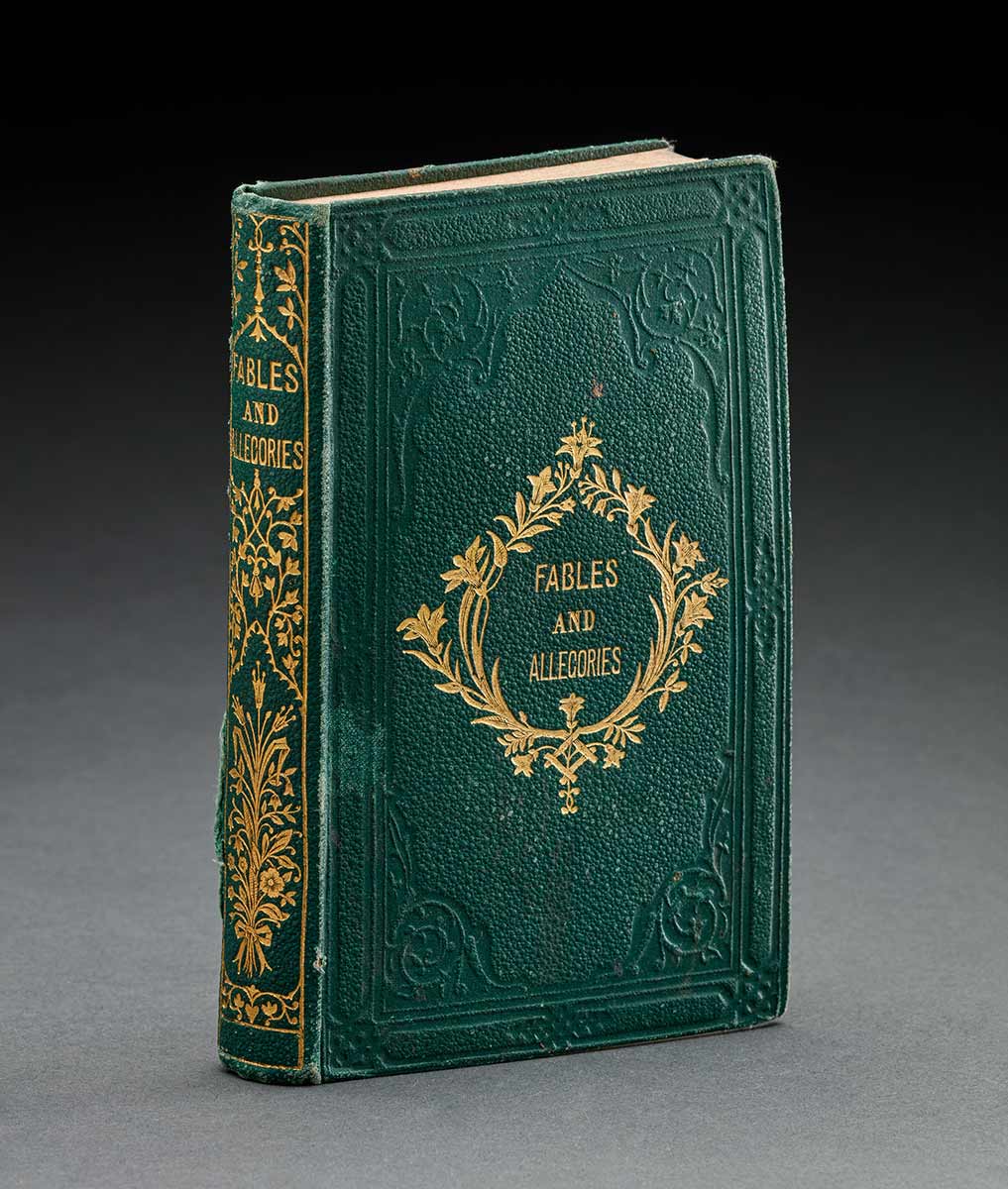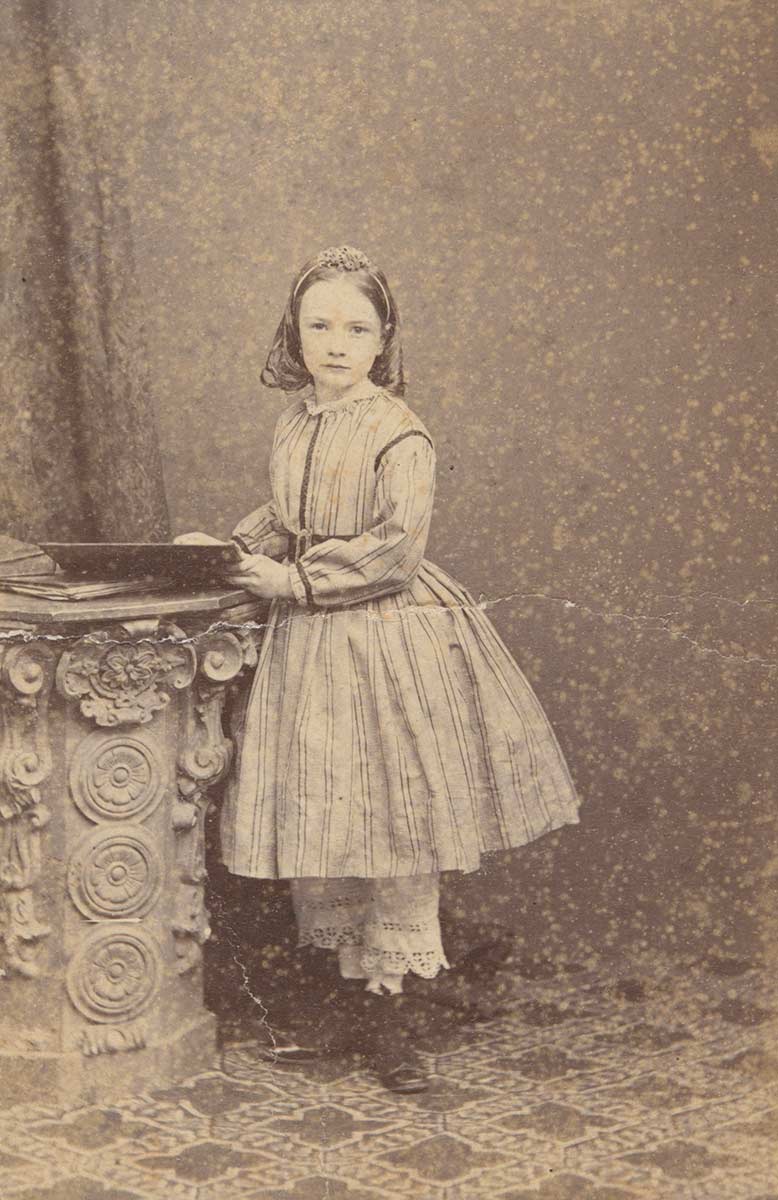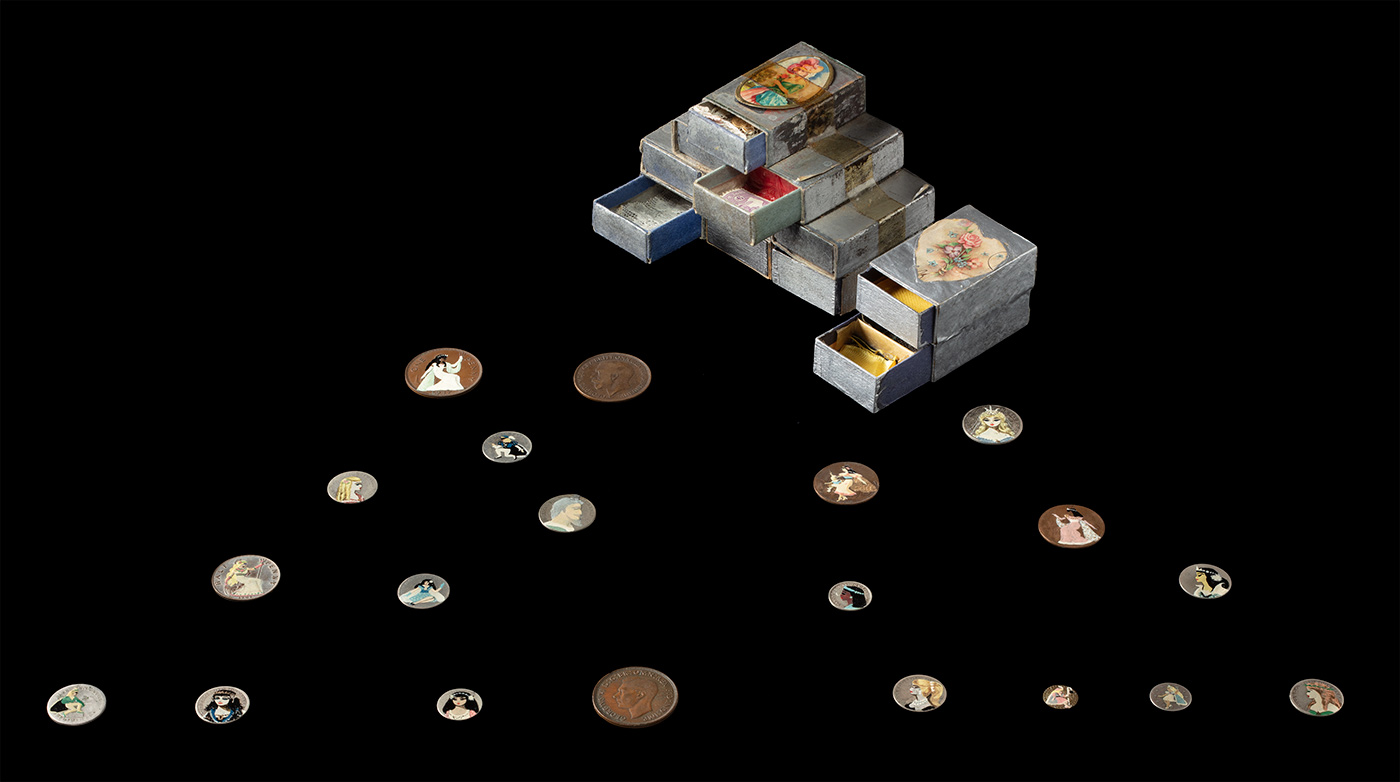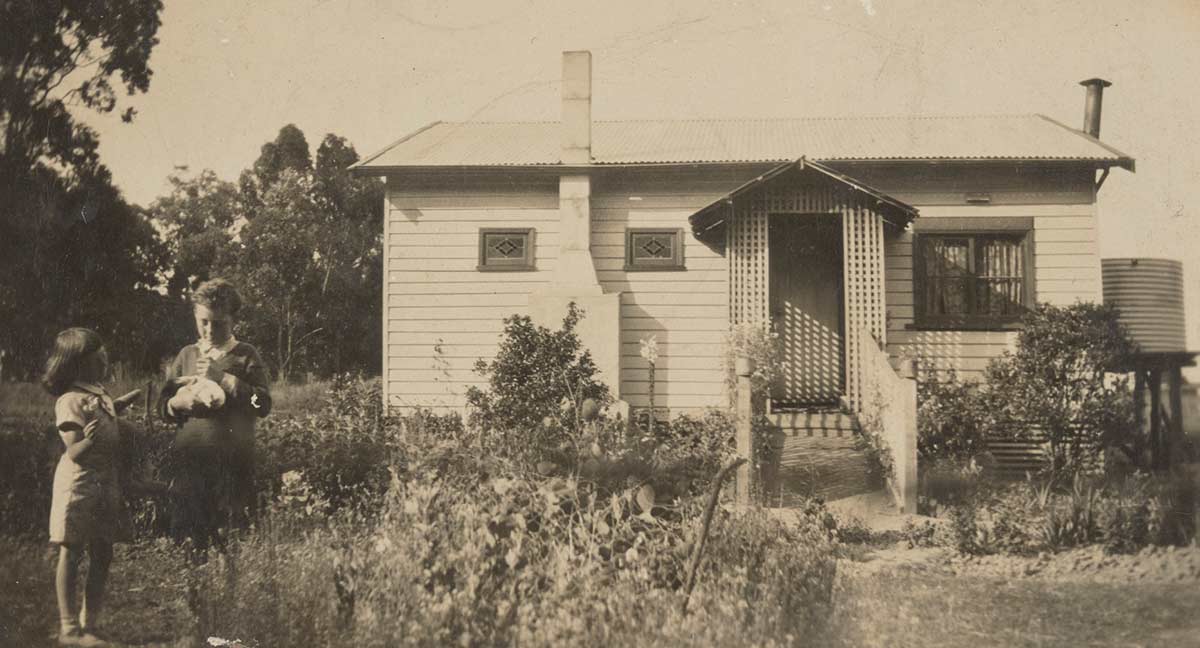Explore some of the toys held in the National Museum's collection that have been used by children in Australia over the decades.
Susan’s doll, 1920s
Jane Gibson, Susan’s niece, 2012:
Susan particularly loved playing with her dolls and practised her dressmaking skills on them.
This doll belonged to Susan Gibson, who grew up during the 1920s at Burrungurroolong, a pastoral property near Goulburn, New South Wales.
Susan had many toys, but her heart belonged to her dolls. Some were expensive, purchased from European manufacturers. Others she made herself. Susan carefully stitched together several dolls and their outfits when she was 4 or 5 years old. She used a hand-operated sewing machine designed by Singer especially ‘for girls’.
Known only as ‘M’, this doll is made from a sheet or pillowcase and stuffed with cotton wadding. Susan made her this silky peach dress with a stripy sash and decorative embroidery.
Susan’s doll’s house, 1920s
The School Magazine of Literature for Our Boys and Girls, 1924:
Every girl would like to have a dolls’ house.
Susan Gibson and her younger brother Andrew shared a large collection of toys. Their parents, Jill and Norman, were generous with their time and money, as were their many relatives.
This sumptuous wooden manor house was painstakingly crafted by hand. We don’t know who made it, but it may have been a Christmas gift for Susan in 1928, when she was 6 years old.
We do know that Susan loved playing with this doll’s house and the scores of vivid characters who lived within its rooms and gardens.
Susan’s tea set, 1920s
Jane Gibson, Andrew’s daughter, 2012:
Susan and Andrew spent a lot of time playing in the garden.
This tea set belonged to Susan Gibson. The sprawling gardens and waterways of Burrungurroolong, the family property, provided a spectacular backdrop for games. Sometimes, Susan invited Andrew to take tea with her in the garden, where the siblings made flower cakes to decorate the table.
Tea was a cherished ritual in Australian society and the children would have observed the adults around them enjoying a leisurely cuppa. Susan’s much-loved china set was made for smaller gatherings. Two cups have been lost, perhaps left as offerings to the fairies.
Nita’s autoharp, 1940s
Nita Lawes-Gilvear, 1988:
I’d have to forget about the things I couldn’t do and do the very best with the muscles I had.
Poliomyelitis is a disease that was feared by families across Australia until a vaccine was developed in the 1950s. Nita Lawes from Scottsdale, Tasmania, contracted polio in 1937, when she was 11 years old. She spent long periods in hospital and suffered from pain and paralysis.
As she recovered, Nita was determined to strengthen her arm muscles. When she was 16, she decided to try playing an autoharp. A local woman gave her this instrument on the condition that Nita learn to play and then return to perform for her. ‘The girl with the harp’, as she became known, was a popular entertainer at parties and community concerts.
Luke’s colouring book, 1950s
Luke Wensing, 2021:
Mum entertained us and nurtured our love of reading, art and craft and music.
This colouring-in and puzzle book belonged to 4-year-old Luke Wensing, who migrated from the Netherlands to Australia with his family in 1953. After the Second World War, the Australian government encouraged European families like Luke’s to come to Australia to boost the population.
Before leaving home, Luke’s parents, Michael and Petronella, had to make some hard decisions. The ship was very cramped and they could only bring a few possessions. Nonetheless, they packed several books to entertain Luke and his baby brother Fred during the long voyage to Sydney via Curaçao, Panama, Tahiti and New Zealand. This colourful book of ‘cutting, gluing, puzzling’ activities amused the boys during quieter moments.
Lilian’s storybook, 1850s
Bibliotheca Probata, 1857:
A casket of sparkling gems for the young.
This storybook belonged to Lilian Faithfull, a member of a well-read pastoralist family living near Goulburn, New South Wales. Lilian was highly educated, and her home, Springfield, had a splendid library stocked with mail-order books and titles picked up during family trips ‘home’ to England.
Fables and Allegories was published in London in about 1857, before Lilian was born. Morality tales for children were popular with the growing British middle classes. They taught readers to tread carefully around danger and uncertainty.
Just the right size to rest on small knees, this book pitched Lilian into a world wilder and stranger than her own. Each age-old story contained monsters, heroes and lessons to be learnt.
Diana’s game, 1930s
Diana Bates, 1992:
We evoked love and joy and laughter and dark despair in the lives of those who lived and moved and had their being in our enchanted cauldron of dreams.
These coins are part of a game dreamt up by 9-year-old Diana Bates and her older brother Terry in about 1939. They grew up on a farm in Christmas Hills, north-east of Melbourne.
Times were tough for many families during the Great Depression and the Second World War. Escaping their impoverished existence, the Bates children created a magnificent kingdom that was under their control. Diana brought the figures on old coins to life using household paints, producing a glittering cast of royals, paupers, farmers and priestesses.
After dark, when school and farm work was done, Diana and Terry played by the light of a kerosene lamp. Pushing these coins back and forth across the table, they acted out lives of drama, romance and intrigue.
Explore more Play
You may also like
